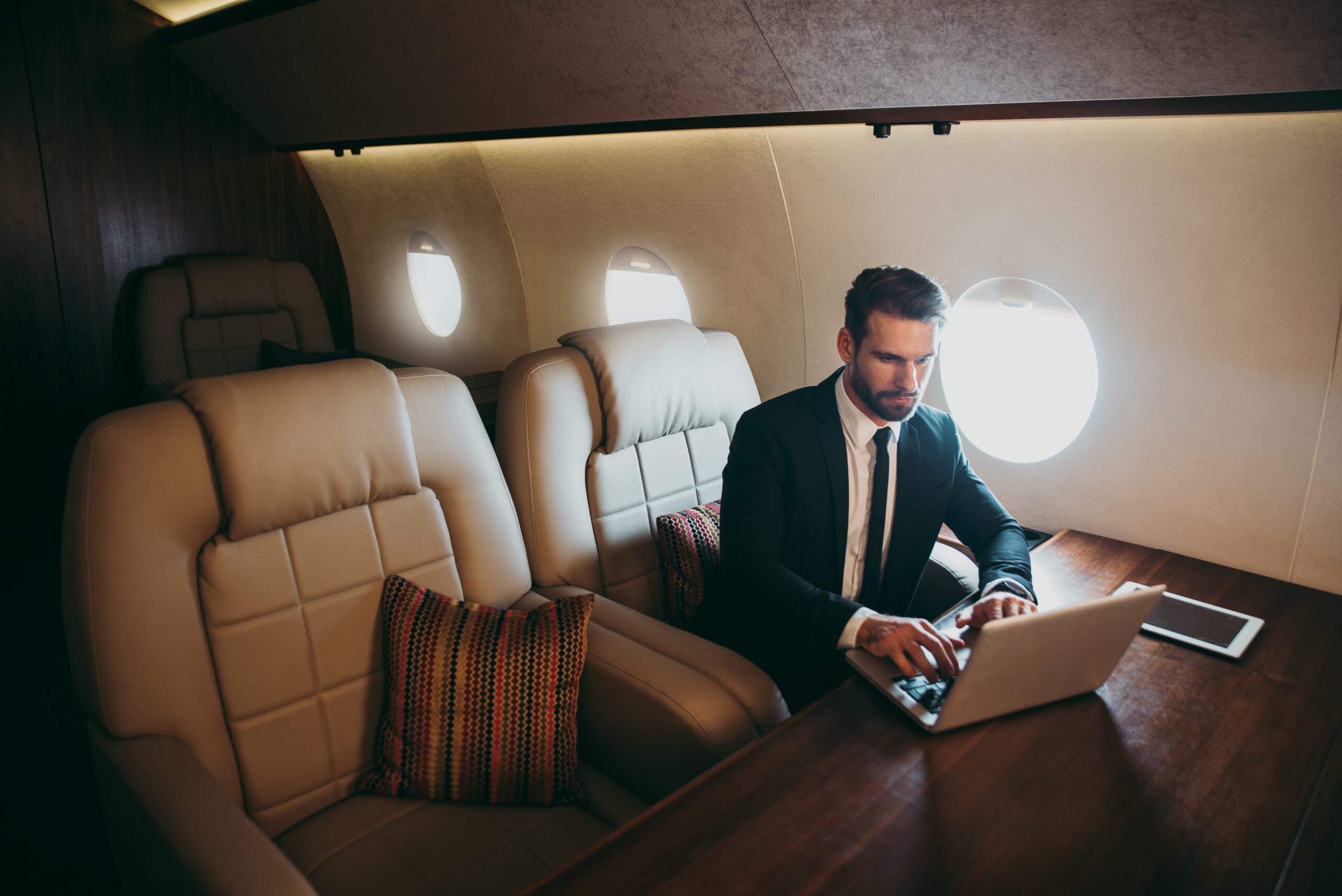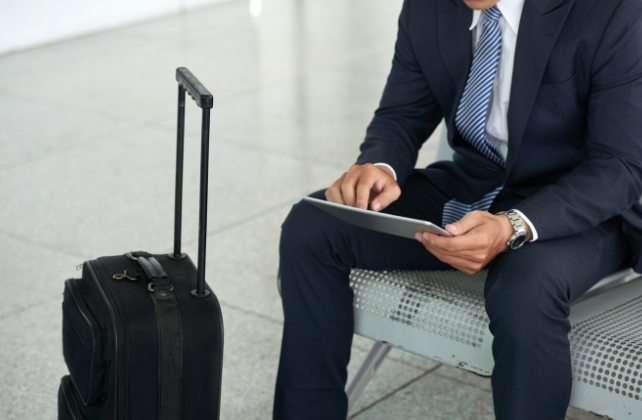How It’s Evolving.
The terrain of business travel in the US has dramatically metamorphosed in response to the global health crisis, charting new patterns that have redefined corporate mobility. With the plunge caused by the pandemic, the industry clung to technology, adopting videoconferencing as a temporary substitute. Yet, as the cloak of the pandemic began to lift, courtesy of widespread vaccinations, a resurgence of US corporate travel unfolded, predominantly within the nation’s borders. This pivot underscores a pivotal trend in managing business travel in the US, where the scales tipped in favor of domestic connectivity, sidelining international sojourns.
A palpable shift, reflective of the demand for more malleable travel options, led to a surge in flexible bookings, sculpting the present-day silhouette of trends in business travel around adaptability. The corporate traveler’s lexicon now prominently features ‘flexibility,’ establishing it as not merely a luxury but a requisite in today’s dynamic environment.

Key Takeaways
- The COVID-19 pandemic prompted an evolutionary leap in business travel in the US, emphasizing virtual meetings.
- Domestic excursions have taken the forefront in the revival of US corporate travel, signifying a significant trend reversal.
- Flexibility emerges as a cornerstone in managing business travel in the US, evidenced by the rise of flexible booking policies.
- Economic restoration efforts are intertwined with the trajectory of domestic business travel, informing the latest trends in business travel.
- A close analysis of US corporate travel statistics indicates a steady recuperation, if not a full return to pre-pandemic normalcy.
- The changing landscape requires ongoing adaptation from businesses to maintain continuity and efficiency in travel management.
Assessing the Impacts of COVID-19 on Business Travel Practices.
In 2020, the impact of COVID-19 on business travel was both immediate and intense, disrupting the landscape of corporate travel significantly. Companies across the US saw a standstill in travel activities, marking an unprecedented halt that called for rapid evolution in travel protocols.
With the onset of the pandemic, the importance of business travel in the US morphed from frequent face-to-face interactions to digital communication, highlighting the resilience and adaptability of the sector. This shift was critical as businesses adopted online platforms not just as temporary alternatives, but as long-term solutions, reshaping the very essence of corporate travel.
The evolution of corporate travel during the COVID-19 crisis demonstrated a dynamic adjustment to new challenges, ranging from international travel bans to local lockdowns. These barriers prompted corporations to rethink their strategies and emphasize the flexibility and safety of their employees, ultimately ensuring that essential operations could continue remotely.
- Introduction of virtual meetings and remote work setups as immediate responses
- Gradual implementation of safety measures for necessary travel
- Investment in technology to facilitate effective communication and operation from afar
As the world navigated through the ebbs and flows of the pandemic’s impact, it was clear that the importance of business travel in the US would see a renewed perspective, particularly in how travel strategies are integrated within corporate operations going forward. By early 2021, signs of recovery suggested a slow but hopeful return to travel, albeit with increased caution and a greater emphasis on domestic travel.
In conclusion, the impact of COVID-19 on business travel has set the stage for a transformed landscape in corporate travel. The lessons learned are shaping new trends that focus on hybrid models of remote and in-person work, smarter travel policies, and enhanced health protocols, promising a more resilient future for business travel in the US.

The Shift from International to Domestic Business Travel Priorities.
As the global landscape of business travel evolved due to the pandemic, a significant shift was observed in the traveling patterns within the United States. A closer look at US business travel trends reveals a pivot towards domestic locales over international destinations, reshaping the dynamics of corporate travel.
Top Business Cities Adapt to New Travel Patterns.
Historically significant for their global business connections, cities such as New York and San Francisco saw drastic changes. With the steep decline in international visitors, these hubs have recalibrated to support and capitalize on domestic business travel. This shift not only maintained economic activity but also spurred a new approach to local business interactions and networking.
Tracking Domestic Travel’s Role in US Economic Recovery.
The persistence of domestic travel played a pivotal role in stabilizing and driving the economic recovery. Business travel management companies in the US were quick to respond, enhancing their services to accommodate the increased demand for domestic mobility. Flexible booking options became a norm, reflecting an adaptive strategy pivotal to sustaining business operations and fostering economic growth.

As domestic travel gains precedence, it’s crucial to understand its impacts not just on the macroeconomic scale but also on local economies dependent on corporate travel. The reinvention in travel distribution has provided unique opportunities for businesses and cities alike to thrive under new norms established by current US business travel trends.
How Business Travel is US: Embracing Flexibility in Travel Arrangements.
In response to the ever-evolving business landscape, the US has seen a marked increase in flexible trip bookings. This shift towards flexibility is particularly prominent within the realm of business travel, where the ability to swiftly adapt travel plans has become crucial. As the demand for this adaptability grows, innovations in business travel management companies have played a pivotal role in accommodating these changes.

The Rise of Flexible Itineraries for US Business Travel.
The increase in flexible trip bookings highlights how business travelers are prioritizing the need to manage unforeseen changes without incurring penalties. The pandemic has introduced a level of uncertainty that requires flexible itineraries, supporting travelers to maintain productivity and focus, regardless of external disruptions.
Innovations in Business Travel Management Companies.
Enhancing the ease of managing business travel in the US, many travel management companies have integrated innovative solutions. These advancements not only simplify booking and management processes but also ensure greater agility in response to changing government regulations and travel conditions. This forward-thinking approach has allowed US business travel to maintain a competitive edge, supporting economic activity and corporate success in uncertain times.
Overall, the integration of technology and flexible policies by US business travel management companies reflects a significant shift towards a more adaptive and responsive business travel environment. This evolution is essential for maintaining the efficiency and reliability of travel, crucial to corporate operations in a globalized economy.
Emerging Business Travel Trends Shaping the Market.
The evolving dynamics within the realm of business travel trends continue to transform how corporations handle travel in post-pandemic environments. A significant element observed through recent corporate travel study insights is the elevation of flexible work arrangements. These arrangements are not just perks but necessities that align with shifting corporate priorities and management strategies in the tourism sector. Regly, the maneuvering of managing business travel in the US has become ever more involvequith corporate leaders now demanding resilience and adaptability in travel policies.
- New travel flexibility norms are setting high expectations among business travelers.
- Virtual conferencing technologies are becoming entrenched as practical substitutes to frequent travel.
- Enhanced focus on sustainability and revised supplier contracts reflect a responsive shift towards more ethical and economically sensible travel engagements.
These evolving trends signify a composite movement towards a redefined corporate travel landscape, maximizing efficacy while minimizing unnecessary expenditures and environmental impacts. It’s a transformative era that sees companies not just returning to previous travel volumes but intelligently optimizing their travel footprints.
Moreover, businesses now reckon with the dual objectives of maintaining employee satisfaction and adhering to sustainability standards, proving that managing business travel smartly can lead to gains on multiple fronts. The interaction between technological advancements and corporate travel logistics continues to offer new avenues for efficiency and policy development.
Overall, the terrain of business travel is in a state of rapid evolution, shaped by technological advances, cultural shifts towards flexibility, and a deeper integration of travel management into strategic corporate functions. This steadfast adaptability not only aids in managing current business travel needs but also prepares corporations for future challenges and opportunities in the global market.
Strategies for Successful Business Travel in the Post-Pandemic Era.
As the landscape of business travel continues to evolve in response to global changes, companies across the US are seeking effective strategies for successful business travel to ensure both the safety and efficiency of their operations. Emphasizing traveler safety, adapting policy frameworks, and incorporating advanced technologies are at the forefront of these strategies.

Analyzing US Corporate Travel Statistics: Recovery and Growth.
As the US navigates through the ebbs and flows of post-pandemic recovery, a close examination of corporate travel statistics reveals a narrative of resilience and growth. The business travel sector, hit hard by global shutdowns, is now displaying signs of rebound. With a keen eye on the progression of travel expenditure and the pulse of live events within the industry, key insights into the future trajectory of corporate travel in the United States are emerging.
Projecting Travel Spend and the Influence of Live-Events.
Corporate travel spend in the US is a strong indicator of the sector’s health and is forecasted to experience a substantial uptick. The resurgence of in-person conferences and trade shows has injected vigor into the marketplace, affirming the irreplaceable value of face-to-face interactions. Live-events are not only catalysts for business development but also drive significant travel spend, supporting industries ranging from airlines to hospitality, and beyond. As businesses reengage with these events, the trickle-down effect on travel spend is evident, leading analysts to project robust growth patterns in the coming years.
In the wake of considerable shifts, US corporate travel statistics have become a compass, guiding stakeholders through a terrain of renewed possibilities. The embrace of hybrid events and digital innovation continues to coalesce with traditional travel models, generating a composite blueprint for the future of business interactions. Ultimately, the confluence of technology, policy adaptations, and the necessity of connection shapes a promising horizon for business travel in the United States. With each live event and corporate itinerary, there lies a testament to the industry’s adaptive spirit and enduring significance.
FAQ
What are the emerging trends in business travel in the US?
Emerging trends include a focus on flexible work arrangements, a preference for flexible travel bookings, an integration of advanced technology for efficiency, sustainability efforts by suppliers, and the strategic realignment of travel within corporate policies.
How has COVID-19 impacted US corporate travel?
COVID-19 led to an unprecedented halt in business travel, a swift pivot to virtual meetings, and changes in travel behavior with a preference for domestic over international travel. Corporate travel had to evolve rapidly to accommodate restrictions and safety concerns.
Why is flexibility in travel arrangements important for US business travel?
Flexibility is key due to the ongoing uncertainty around travel restrictions. It allows travelers and companies to adapt their plans without incurring penalties, which is crucial for managing the logistics and financial considerations of corporate travel.
How are business travel management companies in the US innovating post-pandemic?
Travel management companies are offering more flexible booking options, implementing advanced technology solutions for travel management, emphasizing traveler safety and wellness, and adjusting to new travel patterns.
What strategies are crucial for successful business travel in the US currently?
Strategies include emphasizing traveler safety and wellness, revising travel policies to provide greater flexibility, and utilizing technology to streamline travel management processes and enhance the travel experience.
How is domestic business travel contributing to the US economic recovery?
As international travel faced steep declines, domestic business travel has seen a resurgence, supporting local economies, and playing a critical role in the nation’s recovery process.
What are some insights from corporate travel studies post-pandemic?
Studies highlight a cautious return to travel, the adoption of hybrid meeting models, the importance of sustainable practices, and the need for cost management and flexibility within travel programs.
How are US corporate travel statistics indicating recovery and growth?
US corporate travel statistics show a steady increase in travel spend, a gradual return to pre-pandemic levels, with a particular boost from live-events and the resurgence of domestic business travel.
Source Links
- https://www.concur.com/blog/article/trends-shaping-business-travel-power-shift
- https://www2.deloitte.com/xe/en/insights/focus/transportation/corporate-travel-study-2023.html
- https://www.travelperk.com/blog/covid-19-and-the-evolution-of-business-travel-in-the-us/

